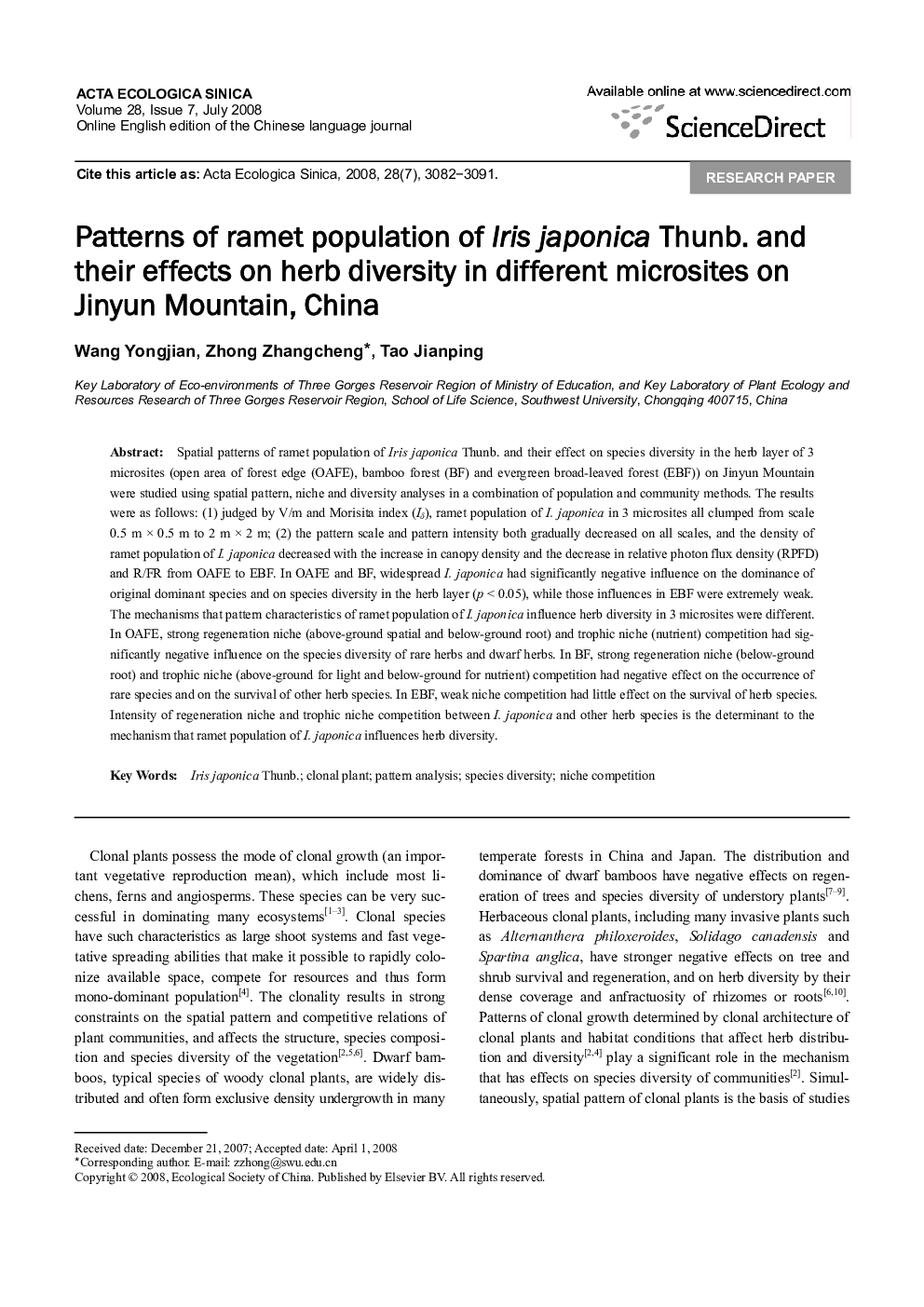| Article ID | Journal | Published Year | Pages | File Type |
|---|---|---|---|---|
| 4380326 | Acta Ecologica Sinica | 2008 | 10 Pages |
Spatial patterns of ramet population of Iris japonica Thunb. and their effect on species diversity in the herb layer of 3 microsites (open area of forest edge (OAFE), bamboo forest (BF) and evergreen broad-leaved forest (EBF)) on Jinyun Mountain were studied using spatial pattern, niche and diversity analyses in a combination of population and community methods. The results were as follows: (1) judged by V/m and Morisita index (Iδ), ramet population of I. japonica in 3 microsites all clumped from scale 0.5 m × 0.5 m to 2 m × 2 m; (2) the pattern scale and pattern intensity both gradually decreased on all scales, and the density of ramet population of I. japonica decreased with the increase in canopy density and the decrease in relative photon flux density (RPFD) and R/FR from OAFE to EBF. In OAFE and BF, widespread I. japonica had significantly negative influence on the dominance of original dominant species and on species diversity in the herb layer (p < 0.05), while those influences in EBF were extremely weak. The mechanisms that pattern characteristics of ramet population of I. japonica influence herb diversity in 3 microsites were different. In OAFE, strong regeneration niche (above-ground spatial and below-ground root) and trophic niche (nutrient) competition had significantly negative influence on the species diversity of rare herbs and dwarf herbs. In BF, strong regeneration niche (below-ground root) and trophic niche (above-ground for light and below-ground for nutrient) competition had negative effect on the occurrence of rare species and on the survival of other herb species. In EBF, weak niche competition had little effect on the survival of herb species. Intensity of regeneration niche and trophic niche competition between I. japonica and other herb species is the determinant to the mechanism that ramet population of I. japonica influences herb diversity.
